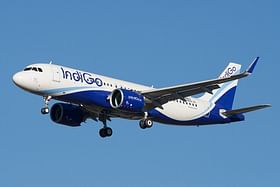India is set to issue a record number of commercial pilot licenses (CPLs) in 2023, surpassing the figure from 2022, Union minister for Civil Aviation Jyotiraditya Scindia said on Tuesday (25 July).
The civil aviation regulator, Directorate General of Civil Aviation (DGCA) in 2023 issued 1,135 CPLs, which is the highest for any year. This figure comprises both certifications for domestically trained cadets and license conversions for those trained abroad.
“In the first five months of 2023, DGCA has issued 731 CPLs. I believe that we will issue more than 1,135 licences this year,” Scindia said while inaugurating three flying training schools in Khajurhao, Madhya Pradesh.
In 2014, the number of CPLs issued stood at 896, which declined to 394 in 2015 and rose to 537 in 2016. Further, it increased to 552 in 2017 and 640 in 2018. The data showed that in 2019, the number of CPLs touched 744 before declining to 578 in 2020 and increased again to 862 in 2021.
The count of CPLs issued stood at 823, 654 and 591 in 2011, 2012 and 2013, respectively.
An individual is eligible to apply for CPL after completing at least 200 hours of flying and fulfilling other conditions. Besides, the individual has to clear theory papers and once successful, the CPL is given for a period of five years subject to complying with various requirements.
The record issuance of CPLs comes at a time when the domestic air traffic has almost recovered after being hit by the coronavirus pandemic and against the backdrop of mega aircraft orders by domestic carriers like Air India and IndiGo.
The growth in the number of Flying Training Organisations and the implementation of monthly examinations for aspiring pilots in 2021, have significantly contributed to the boost in the CPL numbers. Previously, these examinations used to take place once every quarter.
Additionally, empowering flying instructors to authorise training flights has played a crucial role in enhancing aircraft utilisation and expediting the overall training process.


